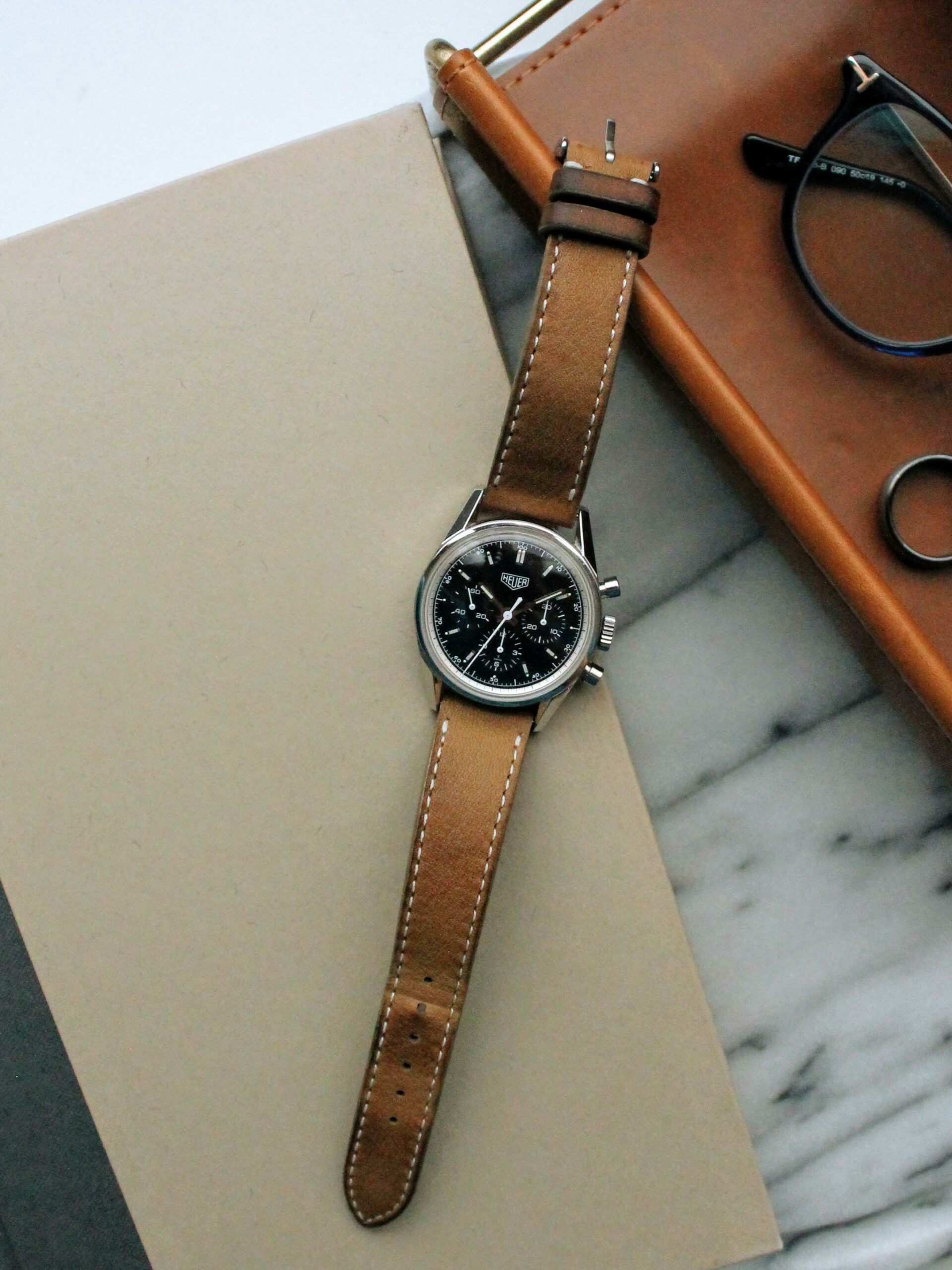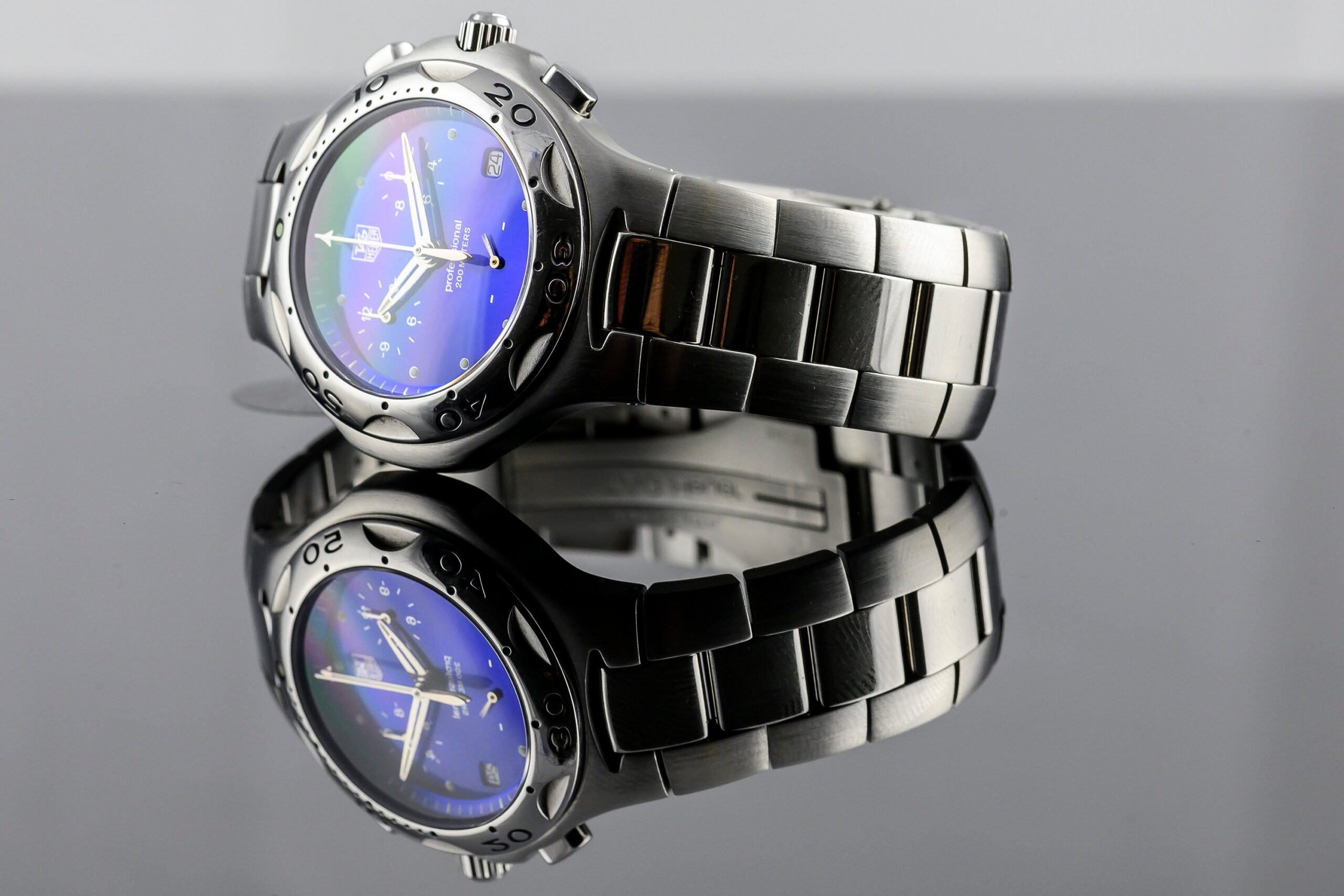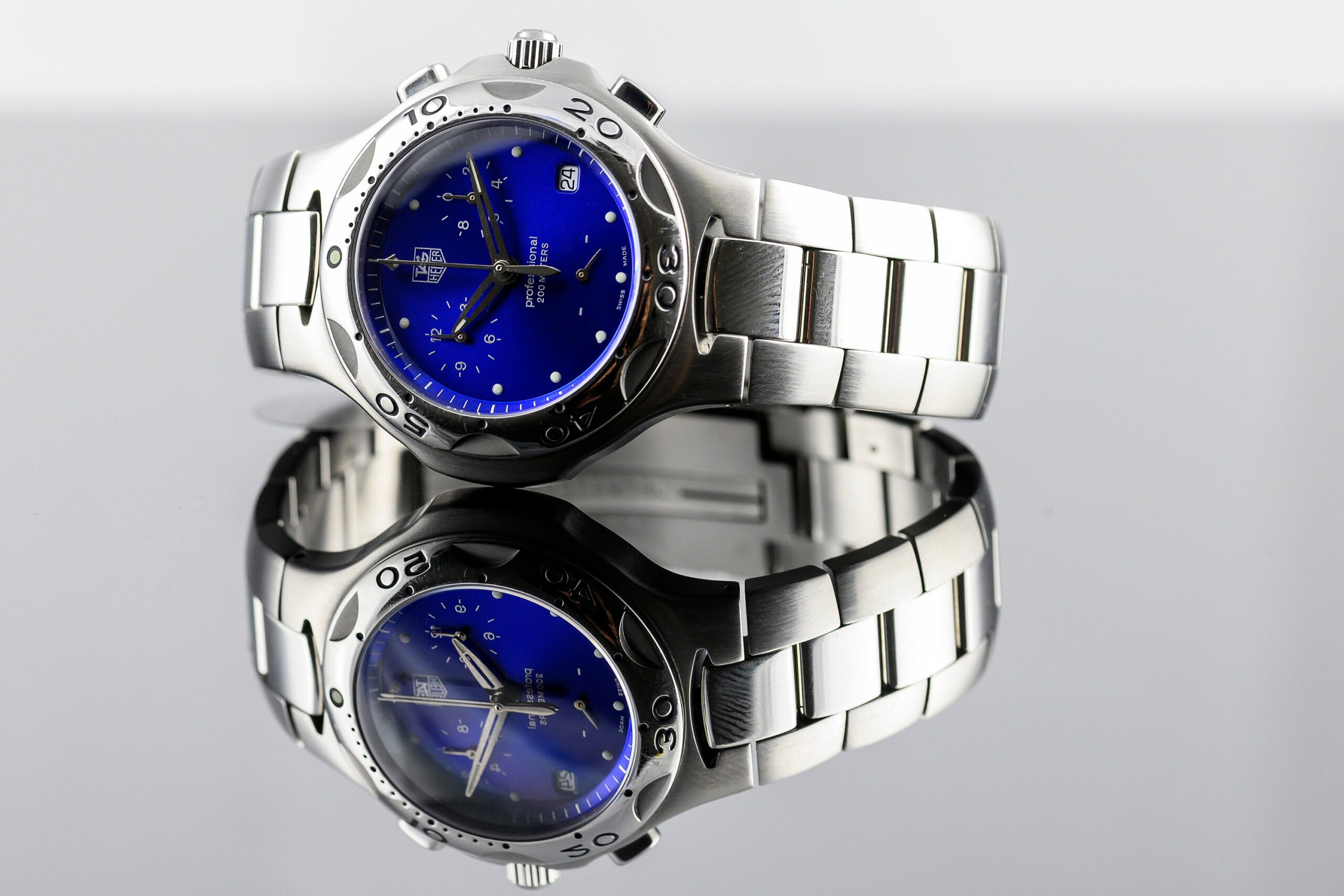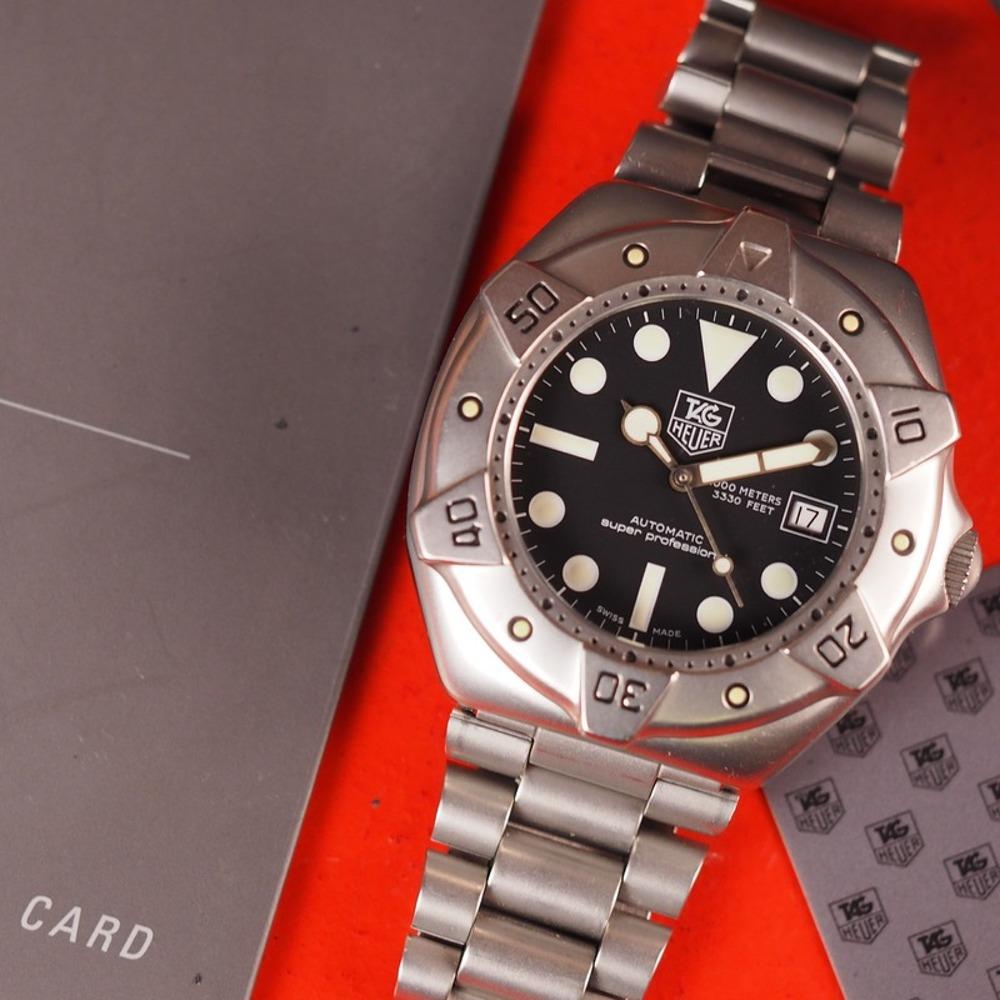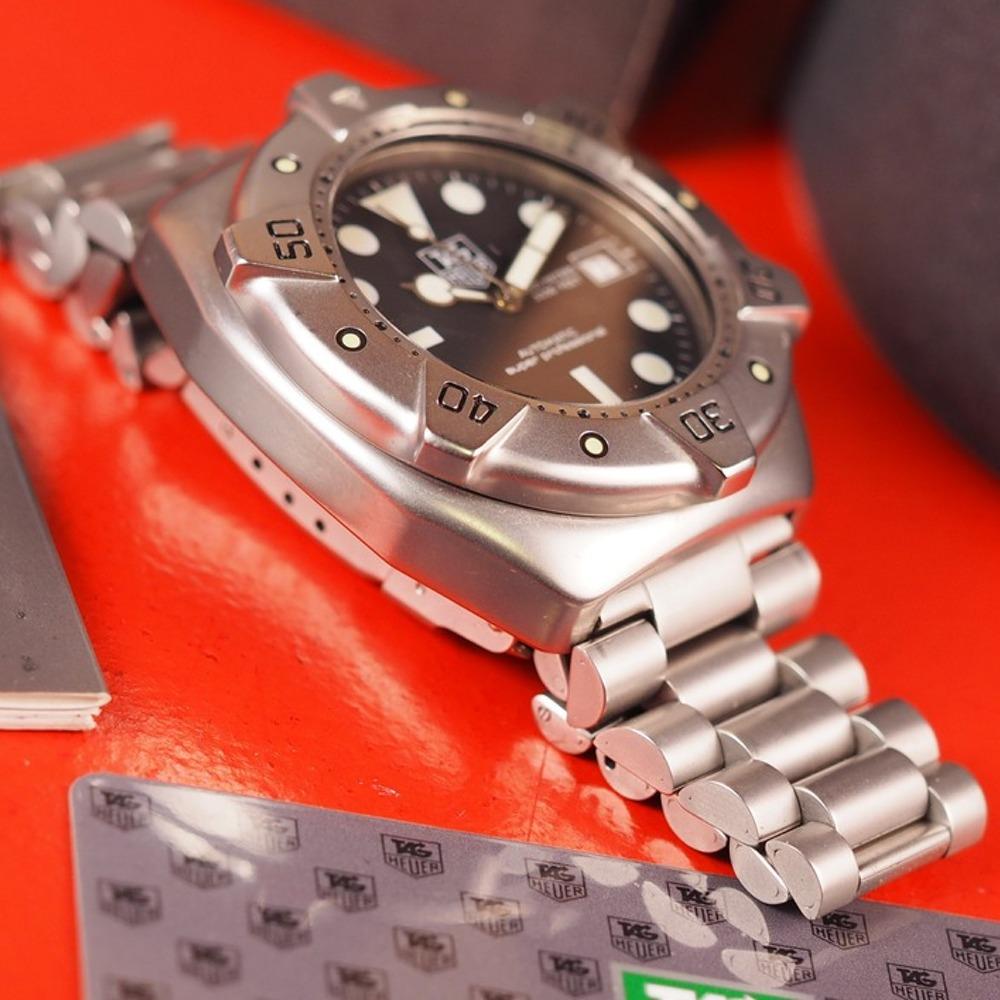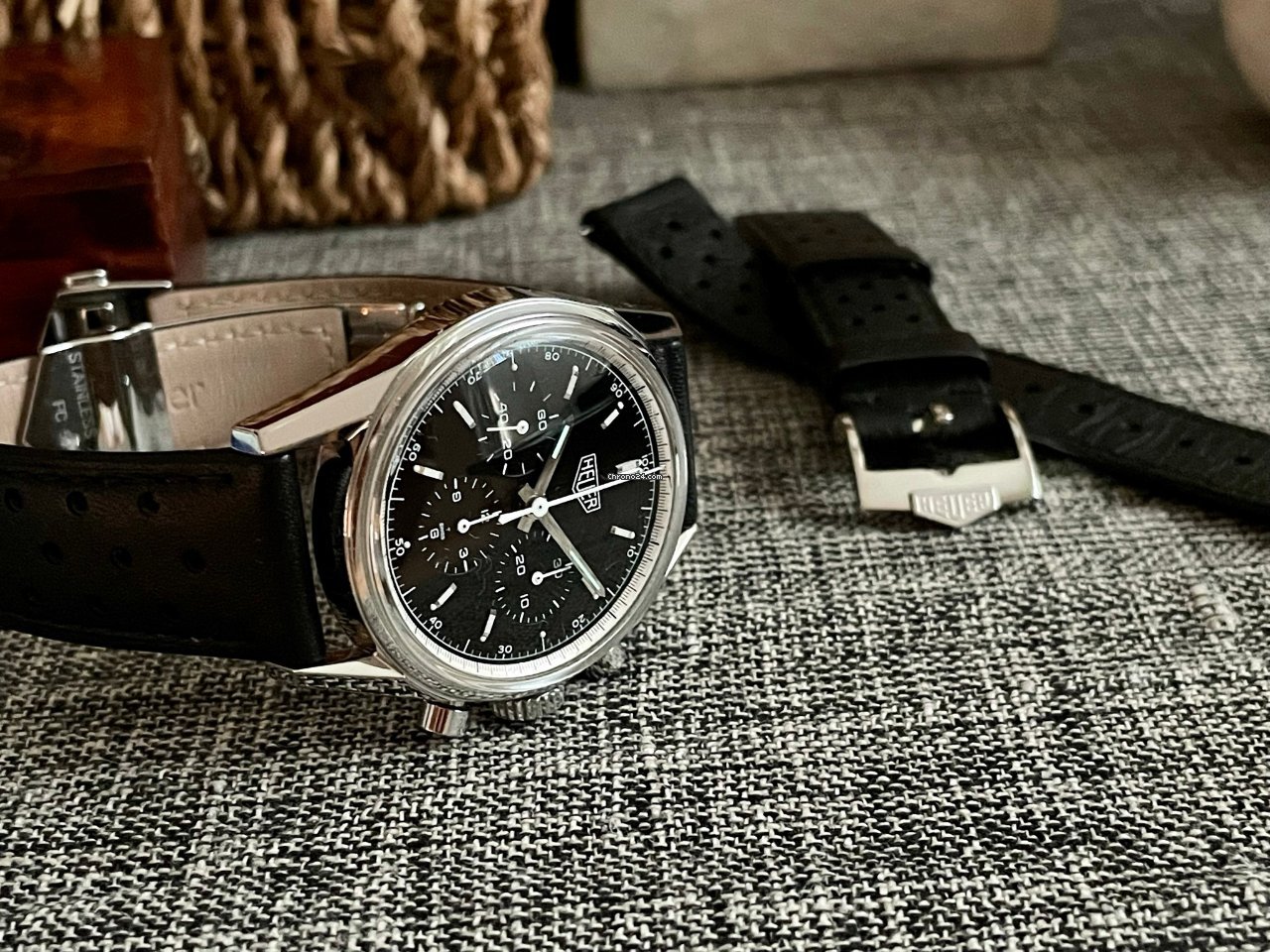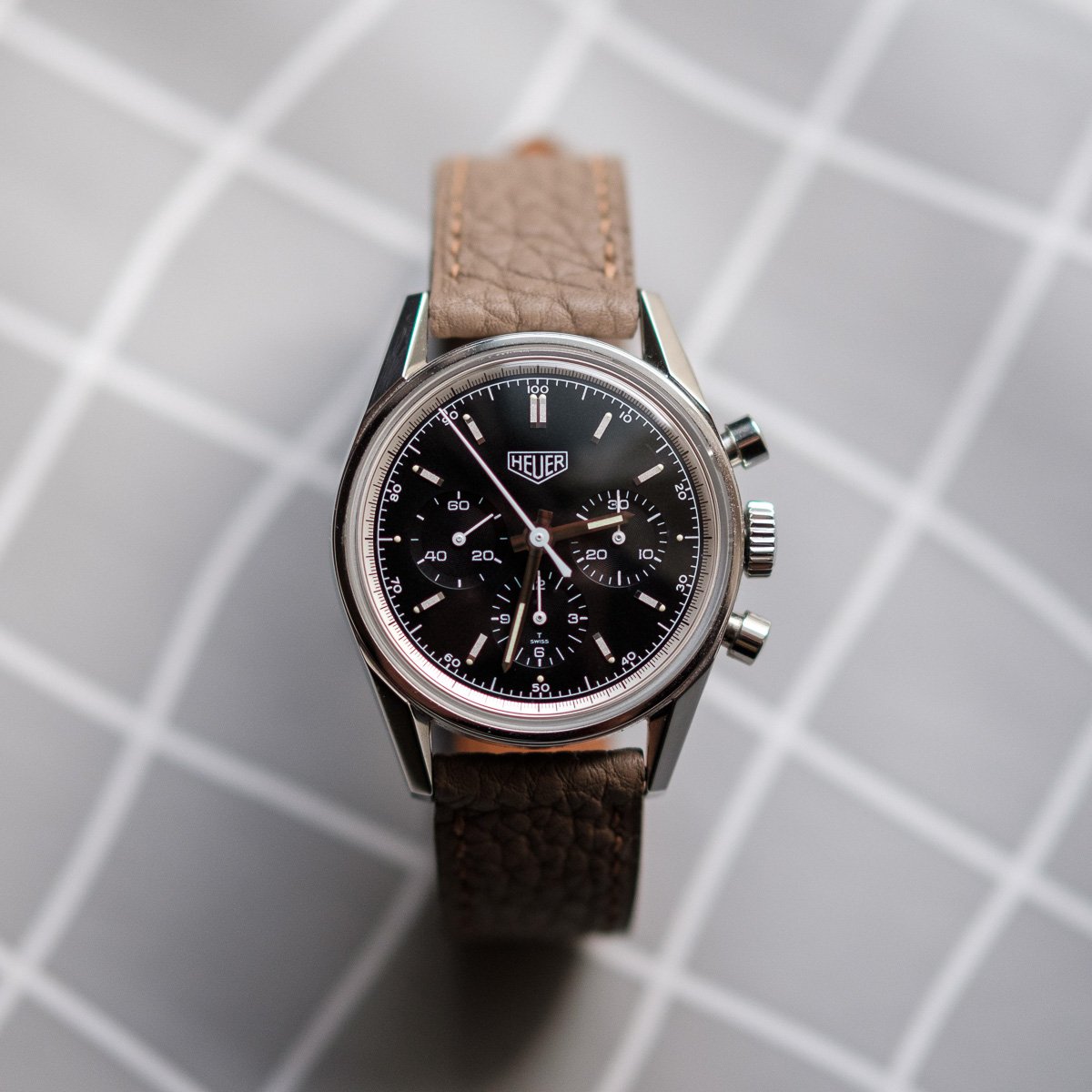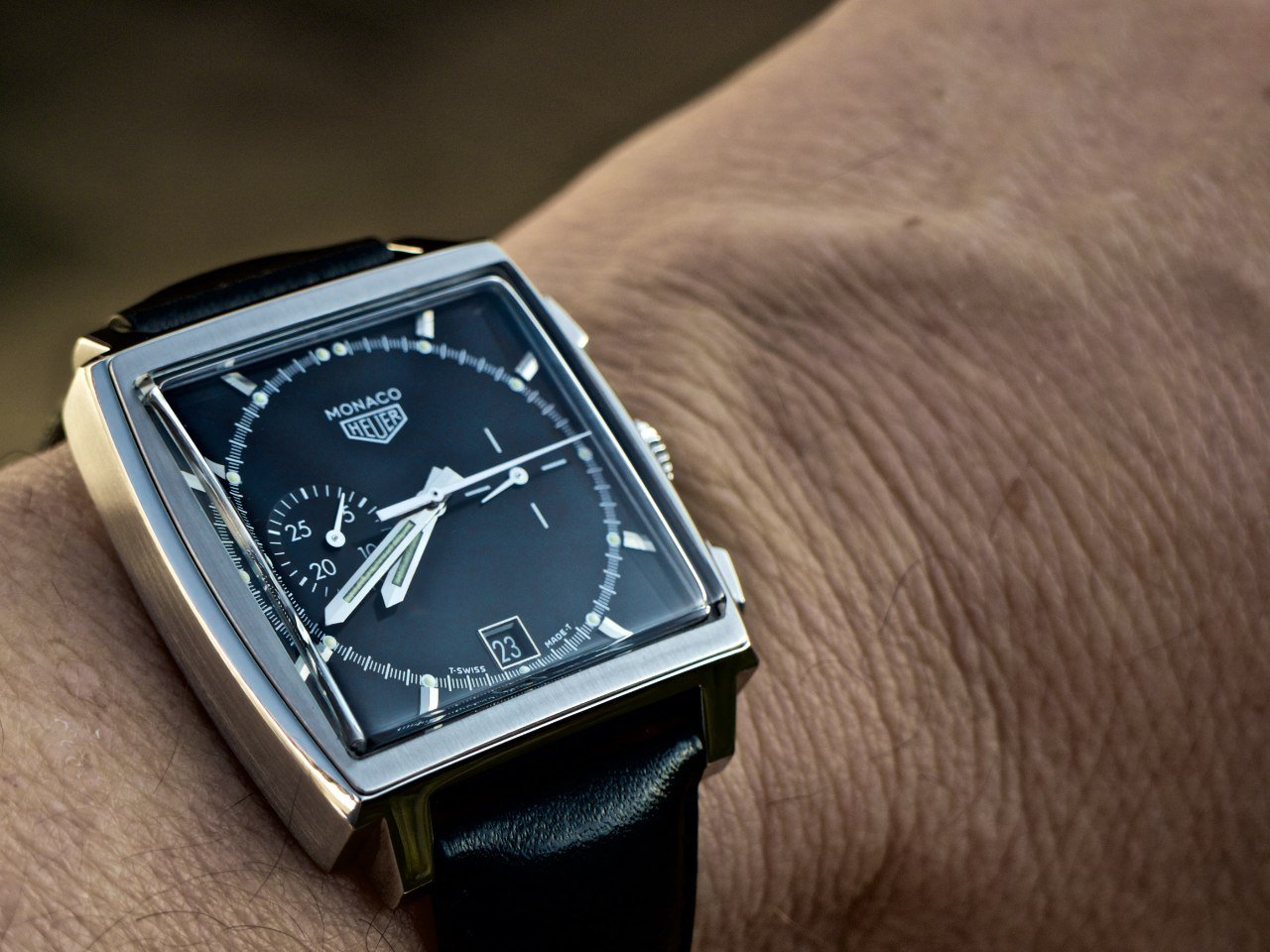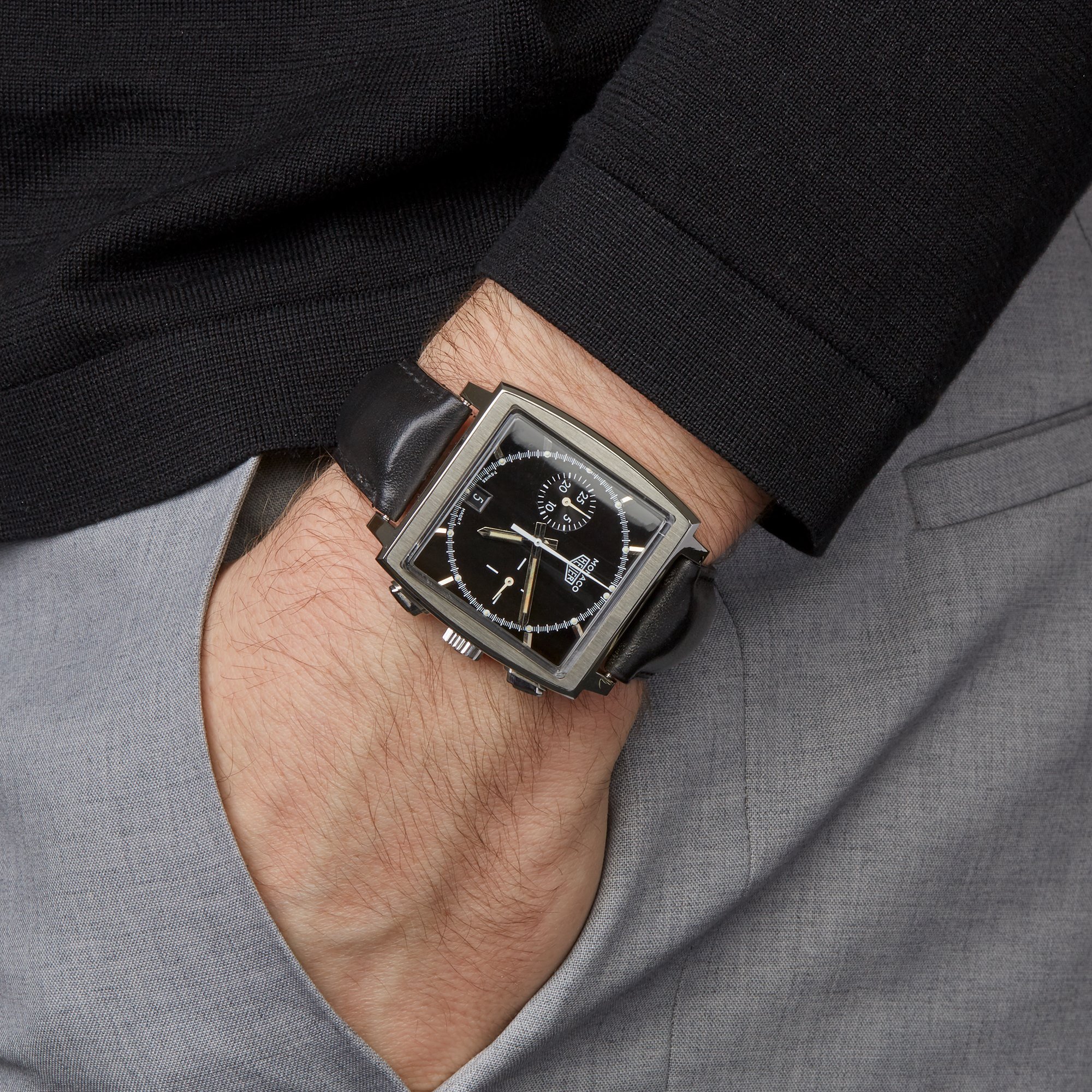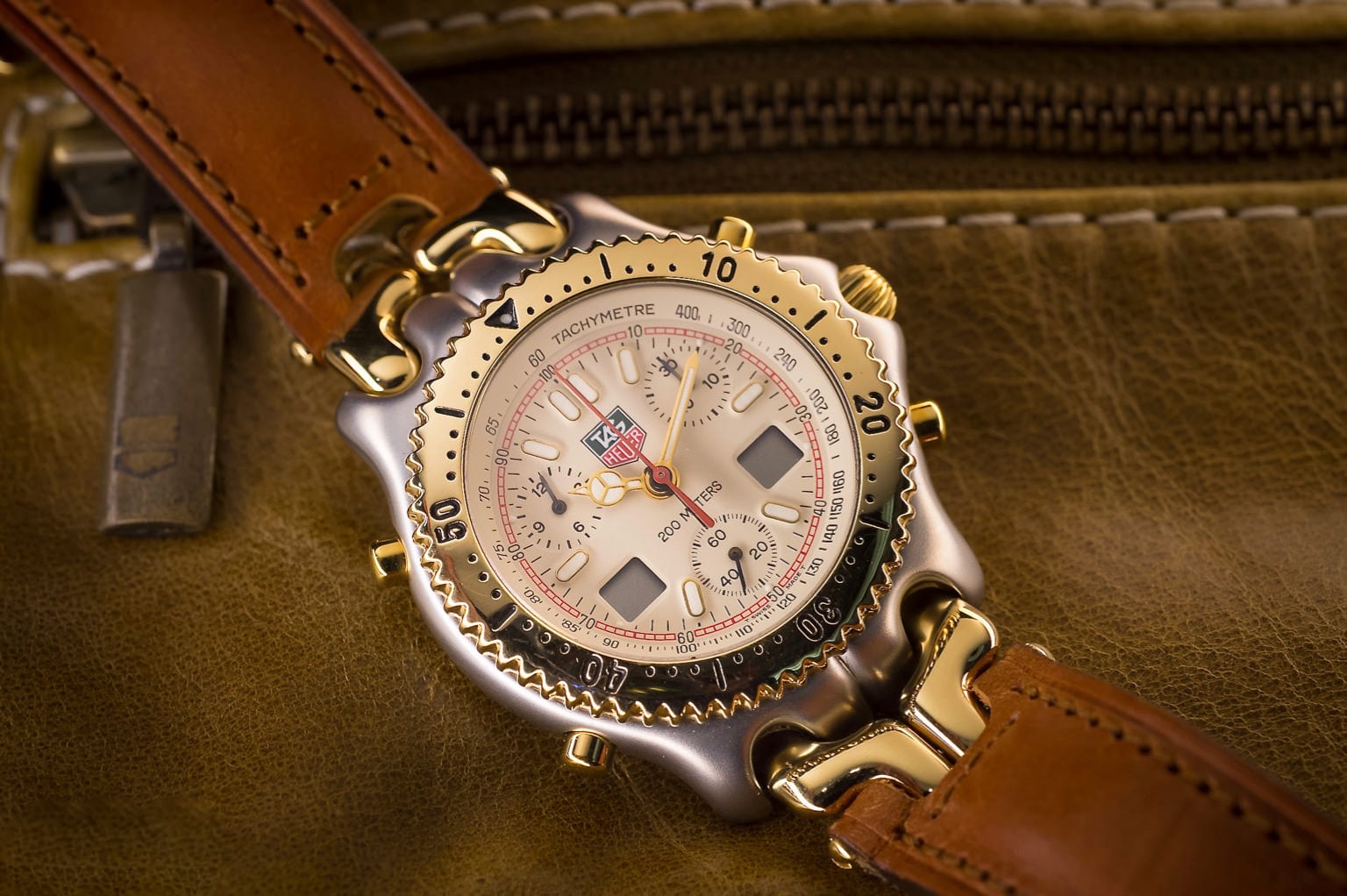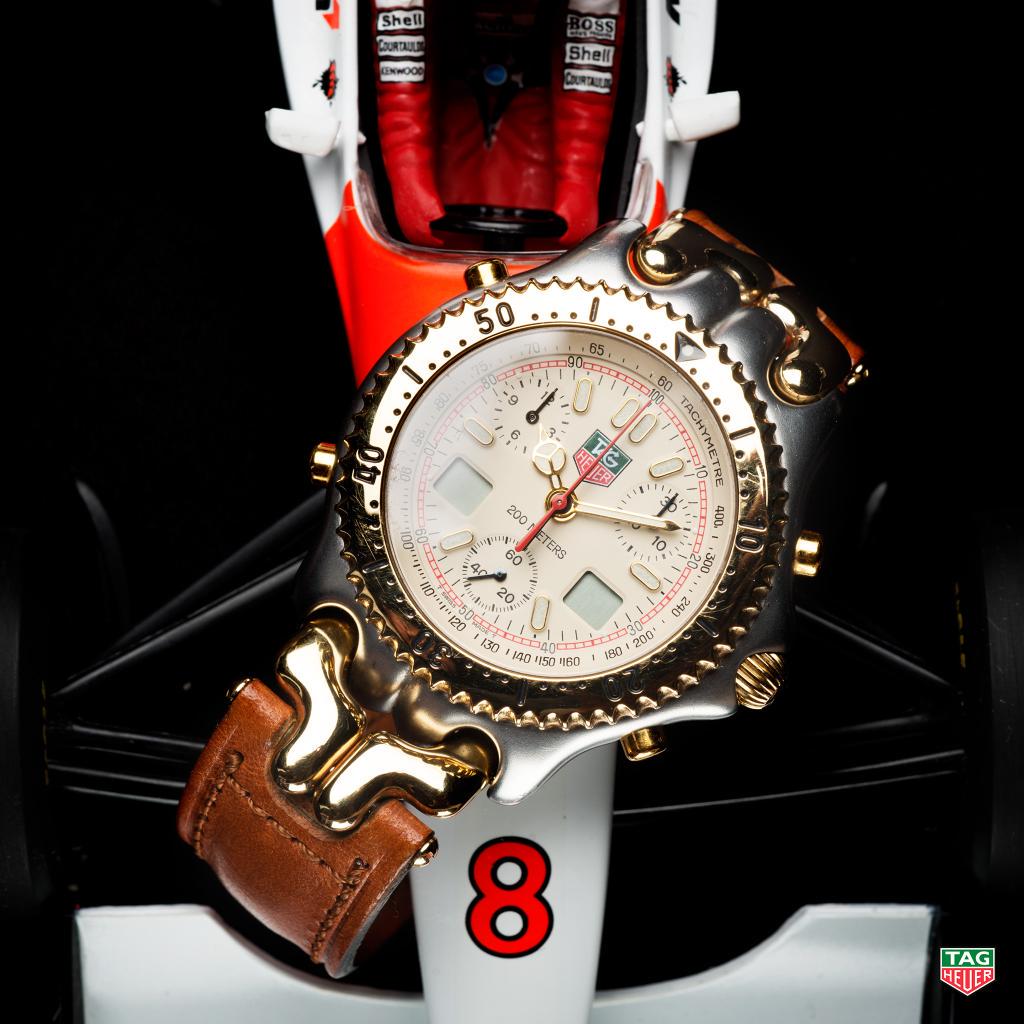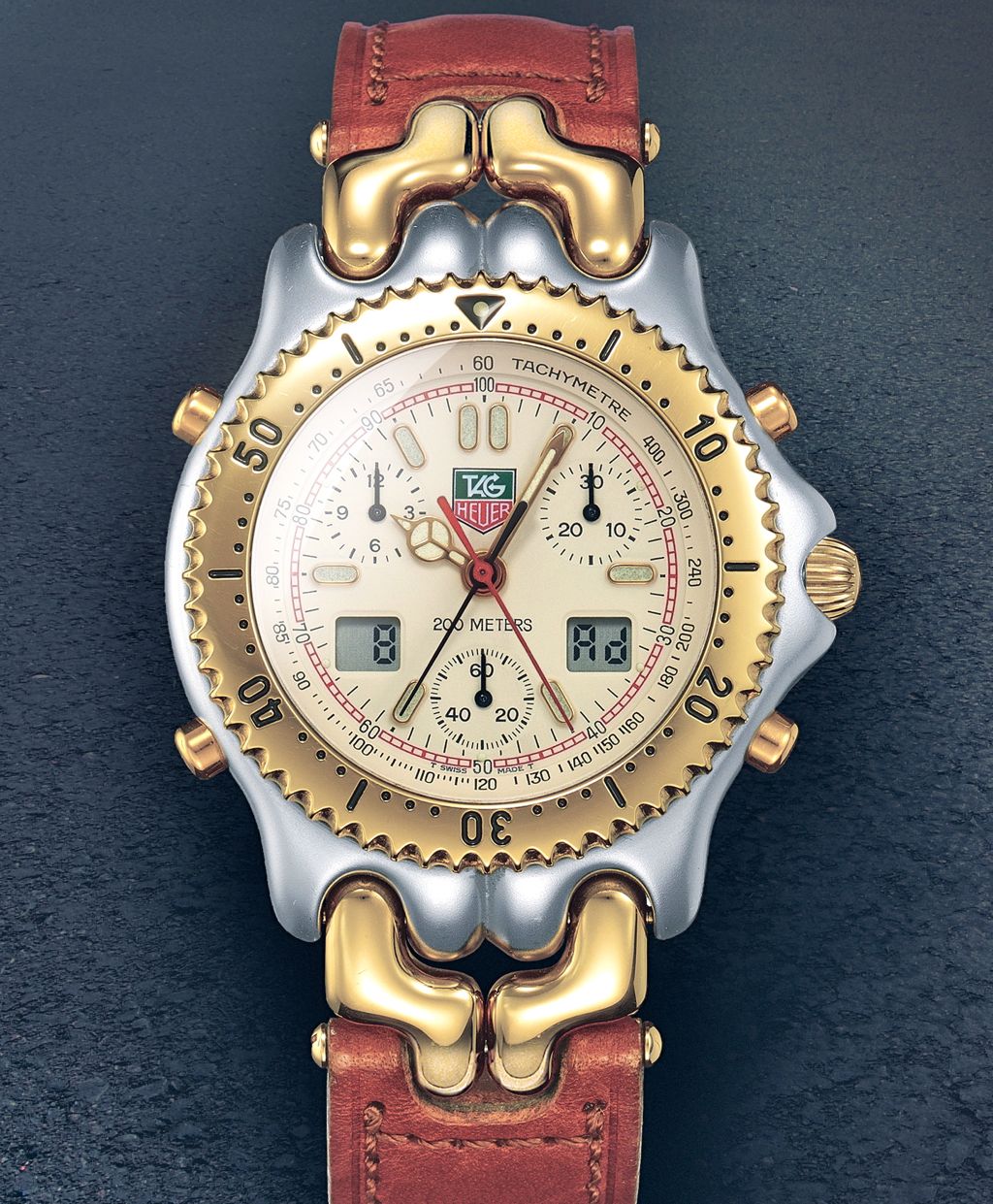Buying Guide: The Best TAG Heuer Watches From The 1990s
We like to talk about vintage watches a lot within the Fratello team. Though most of what we write about is primarily focused on the most recent releases and developments, for many of us, a lot of the fun can be found in the sometimes weird and often wonderful world of vintage watches. It’s a world full of history, remarkable watches, incredible stories, and quirky details. It inspired us to come up with a series of articles focusing on the best watches per decade from a select group of brands. Some of them are priceless, some of them still affordable. In this installment, we will take a look at the best TAG Heuer watches from the 1990s.
This week we will continue our journey through watch history to find the best watches from the 1990s. As I have discussed in the previous articles discussing the best watches from the 1980s, mechanical watches slowly started making a comeback in the eighties. By the time the 1990s began, quartz was still dominating the watch industry. But you could slowly see the two finding space next to each other.
With the gradual rise in the popularity of mechanical watches, we also saw a shift in perception. Mechanical watches became a luxury statement produced by prestigious brands with centuries of watchmaking history. It set it apart from the mass-produced, cheap and quartz watches. This luxury status was further backed up by a renewed interest in watches that featured classical complications. Combining the rich history in watchmaking and the technical masterpieces set mechanical watches apart from the fast world of quartz watches for good.
TAG Heuer in the 1990s
After Heuer changed into TAG Heuer in the mid-1980s, the brand took a different direction. When the days of Jack Heuer were over, the newly started TAG Heuer brand focused heavily on quartz watches. Additionally, the brand took a different direction when it came to its approach to design. The Formula 1 line was the first step in a new direction for the brand. This was followed by more typical TAG Heuer designs in the late 1980s and all through the 1990s. As we will find out, the S/el line was added, the Kirium line defined the late 1990s, and the Formula 1 proved to be a big success in the nineties. All watch families with their distinct looks.
But the 1990s also saw a different focus for the brand. Starting in the mid-1990s, the brand started looking back at all the great watches the Heuer brand had put out over the decades. In 1996 the brand released the first of a series of popular and important re-editions of the Heuer classics of the past. With the 1996 Carrera TAG Heuer, the brand reinstated an icon of the industry and from that moment on catered to both the modern watch fans and the watch enthusiasts that were more interested in the rich past of the brand. In a way, it was the start of the brand as we know it today. So let’s take a look at five of TAG Heuer’s most remarkable watches from the 1990s
The Entry Point — Tag Heuer Kirium Chronograph CL 1112
The first watch on this list is not just a stand-alone watch. The watch represents the famous TAG Heuer Kirium line that is a great representation of 1990s design. I remember it all too well, and I have to be honest here; I am not a fan. The design of the Kirium line was created by famous designer Jorg Hysek. As most of you know, he designed watches for Breguet, Cartier, Ebel, Boucheron, Seiko, and his brand, Hysek. His most famous design is, without a doubt, the Vacheron Constantin 222 that has become an industry classic.
The Kirium line replaced TAG Heuer’s 4000 series. The design principle was to create a watch that looked like it was carved from one block of steel. This principle of liquid metal resulted in a simpler and more naturally flowing design. It was also the last of a series of watches developed with TAG Heuer’s “Six Features” philosophy in mind. These six features were: water-resistant to 200 meters, screw-in crown, double safety clasp, unidirectional bezel, sapphire crystal, and luminous markings. While this philosophy guaranteed a certain standard that made it a renowned luxury brand, it also made it hard to tell the different series apart. They all simply had the same features. Hysek stepped away from those designs and created his interpretation of this philosophy.
Minimalistic dial design
In 1997 TAG Heuer introduced the Kirium collection with a mix of both quartz and mechanical watches. The collection featured models with different case sizes. Additionally, a quartz chronograph was also part of the introduction pieces. It’s my pick for this list for several reasons. It might have been more logical to pick the mechanical chronograph that was introduced in 1999. But this quartz chronograph played a big part in the collection. The first featured a specifically designed handset that would replace the initial Mercedes-style hands with which all the other Kirium models were introduced. On top of that, this is the Kirium dial design that I like the most.
The dial design is very clean and, in my opinion, better balances than the dial of the mechanical version. This version had the date window at 4 o’clock instead of the mechanical version at 6 o’clock as part of the register that was also positioned there. Additionally, the mechanical version has the word “automatic” weirdly placed above the logo. No, the design of the quartz version beats the mechanical version by a mile. And this weirdly attractive blue color gives the watch plenty of extra pop. Inside the 37mm case, TAG Heuer used the ETA Cal. 251.26 quartz movement that would prove to be reliable and easy to service or replace. That is why you will find quite a few of the Kirium quartz chronographs around. Expect to pay between €750 and €1,000 for this icon of nineties design.
My pick — TAG Heuer Super Professional ref. 840.006
My pick for this week is the iconic TAG Heuer Super Professional. The Super Professional line has become iconic in its own right. I have a love-hate relationship with the Super Professional. It represents a lot of what I don’t like about TAG Heuer’s ’80 and ’90s design, but on the other hand, it is an iconic design from my younger days. It’s a watch that made an impact the moment you saw it. There was nothing else out there that looked like the Super Professional. The story of the watch dates back to the mid-1980s, when it was first introduced. The Super Professional stayed in the collection until the early 2000s, and because it was available through the nineties, it is the perfect fit for this list.
The Super Professional was TAG Heuer’s professional diver with water resistance of up to 1000 meters. The watch featured a monocoque case without a removable case back. That was the secret to being able to perform at great depths. Visually the biggest eye-catcher is without a doubt the remarkable bezel and the big lume hour markers. The watch featured a 40mm stainless steel case that was increased to 43mm along the way. Besides the full stainless steel version, Heuer also introduced a version with a gold bezel. It seems a bit useless for a professional diving tool. Now it would fit perfectly on the wrist of any former-Soviet gangster without looking strange at all.
Inside the “Starfish”
Inside the case, TAG Heuer used the automatic ETA 2892 movement. This well-known movement operates at 28,800vph, has 21 jewels and a 41-hour power reserve. It’s a solid movement that would do the trick. But it’s not about the movement when we talk about the Super Professional. It’s all about the statement it makes. Would I be able to pull off wearing this chunky slab of steel? I would. Would I ever consider buying it? Not really, no. But when I look at this Super Professional, it takes me back to when I was younger and had plenty of good times.
TAG Heuer was the brand that stood out in the 1990s with its remarkable designs. That’s why this watch is my pick on this week’s list. Fratello’s own Mike owns a Super Professional. He perfectly explained the relationship he has with the watch, and I can only second that. Because the watch is such a bulletproof piece of kit, you won’t have any trouble finding one. Expect to pay between €1,250 and €2,250 for one, which is quite a reasonable price for such an iconic watch. That is if you like the design, of course.
Money is no object #1 —TAG Heuer Carrera CS3111
The TAG Heuer Carrera CS3111 is a pivotal release in the history of the brand. After the Carrera was discontinued in 1986, an illustrious name in the industry disappeared from the stage. It didn’t fit the brand’s new “Six Features” philosophy and had run its course according to management at the time. But luckily for watch enthusiasts all over the globe, this only lasted for ten years. In 1996 the brand decided to re-introduce the Carrera name and do it in proper style. TAG Heuer released three different versions of the Carrera. The first was the gold Carrera CS3140. The second was the white dial Carrera CS3110 that was a re-interpretation of the classic Carrera 2447D. The third was the black dial Carrera CS3111 that was modeled after the iconic Carrera 2447N.
TAG Heuer introduced the three watches at the Monza race track and invited Jack Heuer to be present at the presentation. Something that was not easy for him after he had to sell his company in 1982. But Heuer was present. On top of that, a couple of months after the introduction, the book “Mastering Time” was released that told the brand’s story, including the TAG Heuer part up until that point. So you could say that in1996, we saw an important step in the renewed interest for the brand with a lot of things falling into place. The Carrera CS3111 was the perfect representation of that. It is generally considered the best re-edition that ever came out as it was true to the original. The only difference was there was no mentioning of the Carrera name on the dial.
A classic movement
The watch features a 36mm stainless steel case with the iconic black dial with a white outer ring. In my article about the best Heuer watches from the 1960s, I made the silver dial 2447S my pick because it was the first, and it looks incredibly clean. But I also have a soft spot for this dial configuration. It’s just classic Carrera in optima format. At 36mm, it does feel small compared to many of today’s watches, and that would be my only issue with this watch. Then again, it is its original size, so if you can pull it off, more power to you. The size was the reason the brand switched to the bigger 39mm Carrera models later on.
Inside the case, you will find the legendary manual-wind Lemania 1873 movement. Despite the great iconic caseback of the Carrera CS3110 that featured the Heuer logo, the model no. and the serial no. the watch did deserve a display case back. TAG Heuer made sure that the movement was finished very nicely, and it’s truly a joy to look at. The movement operates at 21,600vph, has 17 or 18 jewels, and comes with a 40-hour power reserve. It was a great movement for this homage to the classic Carrera. The three models started what we now know as the TAG Heuer Heritage line of watches and why they are incredibly relevant. If you want to buy one, expect to pay between roughly €4K and €6.5K, which seems rather affordable.
Money is no object #2 — TAG Heuer Monaco CS2110
In 1997 TAG Heuer released a second iconic Heuer timepiece from the past. With the TAG Heuer Monaco CS2110, the brand re-introduced the Monaco that was made famous by Steve McQueen in the movie Le Mans. The Monaco was dropped from the Heuer collection in 1975 because it was hardly a commercial success for the brand. In essence, it’s quite understandable because the people that have had a Monaco on the wrist know that it’s not the easiest to wear. Nevertheless, the watch became iconic for its shape and colorful blue and red presence when Newman wore it on his wrist. But when TAG Heuer decided to re-introduce the Monaco, that was not the version they were going for.
The TAG Heuer Monaco CS2110 was very subdued compared to its colorful predecessor. The watch was produced in a limited run of 5,000 pieces with a black dial and black leather strap. You could also get a pretty extravagant bracelet, as you can see in Mike’s article about the Monaco CS2110. While the bracelet has its charm, the black leather strap is the way to go to give the watch its charm. The watch featured a 38 x 38mm square case that was rather modest in its presence and was 13mm thick. It featured a crown at 3 o’clock, flat pushers, an acrylic crystal. What I love about the dial is that it used tritium as lume, which gives these watches a vintage vibe that looks very nice.
No TAG Heuer but Heuer
Another remarkable detail is that TAG Heuer decided to go for the old Heuer logo on the dial and leave the TAG name. Once the brand was acquired by LVMH in 1999, that changed, and all the classic re-editions featured the TAG Heuer logo instead. So this is quite a unique version of the classic. Inside the 38mm square case, you will find the automatic ETA2894 chronograph movement that the brand used for many of its chronographs. The modular movement was based on the ETA 2892 and operated at 28,000vph, has 37 jewels, and has a power reserve of 42 hours.
The TAG Heuer Monaco CS2110 was a second significant re-introduction of the brand’s classics. It’s why this watch is very important in the overall reappreciation of the classics. Don’t forget, TAG Heuer was on the top of its game in the 1990s, and the Kirium S/el and later the Link models were everywhere in those days. So the brand could have easily ignored the greats from the past. But luckily, they didn’t, and it’s why we have seen a great number of Moncao models ever since. After the CS2110, the brand released a second limited edition with the Monaco CS2111, and another year later, the brand decided to make the model a regular in the collection. Finding a Monaco CS2110 is possible, and they are not really that expensive. Prices are roughly between €2.5K and €3.5k for one. If you can pull it off, it’s a great catch.
Money is no object #3 — TAG Heuer S/el ref. S25706C “Ayrton Senna”
The last watch on this list is a legendary watch amongst watch and race fans alike. The TAG Heuer S/el Ref. S25706C was the watch the legendary F1 drive Ayrton Senna wore in the early 1990s. It made the watch iconic for a large audience. The S/el line was introduced in 1987, so it has its roots firmly planted in the 1980s. And judging by the design, that is no surprise. The S/el line is also often mentioned as the first proper introduction under the new TAG Heuer moniker. While the Formula 1 collection was introduced as the first collection with the red and green TAG Heuer logo, it was introduced in March of 1986. Only two months earlier, the company name was officially changed from Heuer to TAG Heuer. Hence, it seems logical that the Formula 1 collection had already been in development under previous management.
During the 1990s, the S/el collection was the brand’s best-selling collection. It got its name from the term “Sports Elegance” and was designed by Eddie Schopfer. Schopfer is also the man who designed the Heuer 2000 range and later designed the Breitling Emergency and the 2013 Chronomat. This was also the first collection that featured the “Six Features” I discussed earlier in this article. The S/el collection was intended as a series of watches that you could wear while diving and at the dinner table. At its introduction in 1987, it was the top-of-the-line collection for the brand. The collection features seven lines: time-only, chronograph, and digital chronograph, all in quartz and time-only, Chronometer and chronograph in automatic. Lastly, there was the S/el Leather series that replaced the standard automatic line in 1994-95.
Perfect brand ambassador
The standout feature of the S/el line was, without a doubt, the bracelet design. It is one of the most iconic designs in watch history. It’s also one that I don’t like despite appreciating its historical value. It is chunky, weird, but incredibly comfortable, according to people that have one or have worn one. The bracelet or leather strap with an end link was perfectly integrated into the case design, and therefore I greatly appreciate what Schopfer pulled off. When Ayrton Senna came to McLaren, it was also the start of his brand ambassadorship for TAG Heuer. He chose to wear the S/el Digital Quartz 1/100th Chronograph ref. S25706C.
The 39mm watch was executed in bi-color and came with gold end-links on a leather strap. A detail I love is that the watch features a cream-colored dial known as an egg-shell-colored dial. Besides the color of the dial, the dial design was also unique, with the added 1-100 scale in red. The watch stayed in the collection until 1998, and the design remained unchanged all through its lifetime. Most of you will know the story of the McLaren mechanic who jokingly proposed swapping watches at the end of the 1993 season if the Brazilian would win the F1 World Championship. Senna didn’t win it but decided to give the watch to him anyway at the end of the season. The iconic TAG Heuer S/el Ref. S25706C is a tough find. If you do, expect to pay around €1,000 for one. A fair price for such an iconic watch.
Final Thoughts
As always, I can only cover a few of the great number of classics that TAG Heuer produced. There is an incredible world of different models and references to discover when it comes to TAG Heuer. If you begin exploring the world of vintage TAGHeuer, don’t be surprised to find a great variety of subtle and not-so-subtle differences between the different generations of one model. Especially the number of dial executions is sometimes overwhelming. Next, you have to remember that many vintage pieces were serviced over the decades, and parts have been replaced. And lastly, you have to be aware of many fake and Franken pieces out there.
This crucial historical info has been well documented by passionate Heuer collectors and is available to read online. I want to mention a couple of websites: Jeff Stein’s On The Dash, Vintage Heuer, Calibre 11 — home of many vintage Heuer collectors, and the Heuer Price Guide. All of them contain tons of valuable information. On top of that, contacting vintage experts will help out greatly. It’s a great way to learn more about a watch and get to know some amazing people along the way.
Next week, we will look at some of the best watches from Swatch from the 1990s. In the meantime, make sure to let us know what your favorite TAG Heuer watches from the 1990s are in the comment section below!

